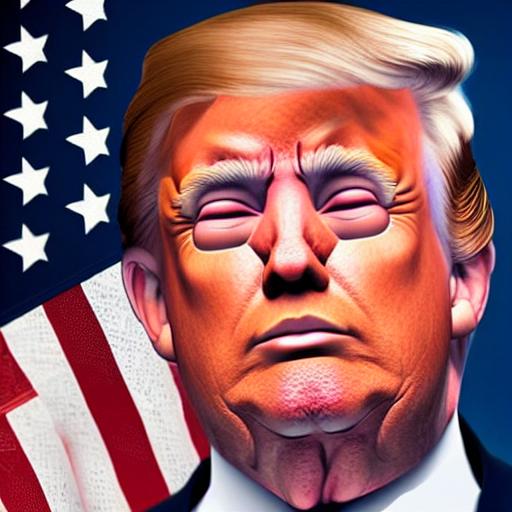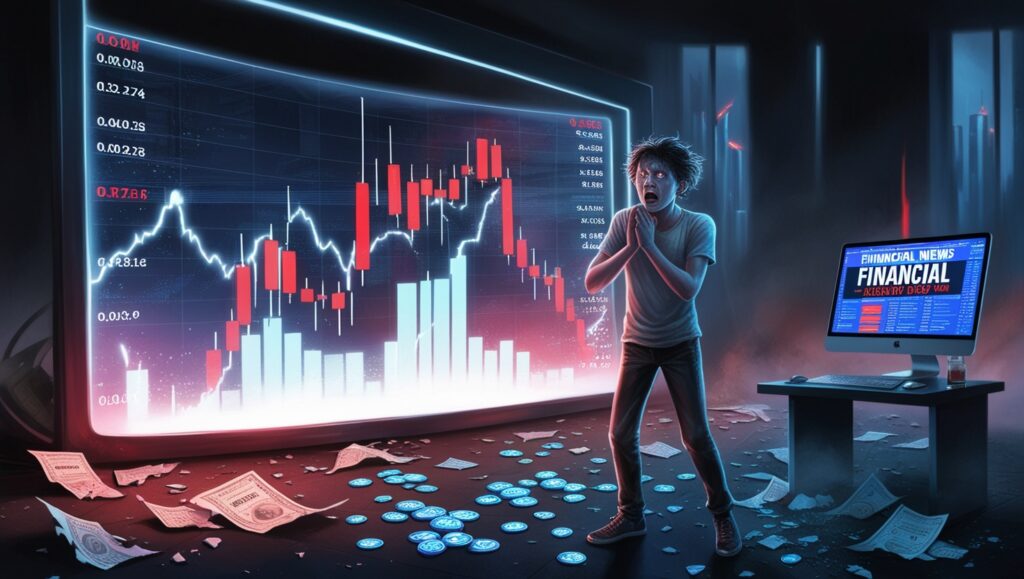The opening skit of Saturday Night Live’s episode this weekend made fun of former president Donald Trump’s just-released, internet-trending non-fungible token (NFT) collection.
In many ways, it is a scam, according to James Austin Johnson, who played the 45th president in the cold opening of the show.
The Trump Digital Trading Cards have grown in popularity since the collection was released on Thursday, selling out in less than a day, despite the fact that the story about the collection was eagerly covered by the mainstream media for its comedic value.
The trading volume for the collection at the time of publication was 6,658 ETH, or roughly $7.8 million. Its initial floor price was $99, and it has been circling around 0.3 ETH, or $350.
There are 45,000 tokens in the collection that resemble baseball cards. Each collectible features a different outfit worn by Trump that is associated with a rarity element that enables users to enter a contest for a chance to win rewards like a zoom call with the president or a cocktail party at Mar-a-Lago.
Internet sleuths have done extensive research on the project and the individuals behind the wallet addresses linked to Trump’s collectibles in the wake of the project’s apparent success. The company that created the collectibles is allegedly hoarding a large number of them, the project improperly relies on stock photography, and the majority of the buyers opened new wallets without holding any cryptocurrency, leaving them with NFTs and no way to derive any potential future value from them.
An odd case involving 1,000 NFTs
Over the weekend, Twitter user @NFTherder noticed something peculiar about a significant portion of the collection’s rarest NFTs. The user posted a thread in which he or she described the type of transaction data for the contracts included in the mint.
A “Donald Trump Admin” wallet sent 1,000 tokens to a Gnosis Safe Wallet.
The Collect Trump Cards website stated that 44,000 of the 45,000 tokens created in the initial series would be available for users to mint, but it did not state what would happen to the remaining 1,000 tokens. Whereas another project may have saved those assets for a later date in order to revive demand, data suggests that the administrative wallet has the remaining 1,000 tokens.
The crypto-hedge fund-backed NFT collection “Starry Night” moved its tokens into a Gnosis Safe wallet along with other valuable assets after Three Arrows Capital failed. Holding the assets in one location was probably done out of caution to stop any single actor from removing them from the wallet.
According to the Trump Trading Card website, there was a strict limit of 100 Trump Digital Trading Cards per purchaser/household, which allowed one person or group to obtain a sizable portion of the NFT pool without being subject to the same restrictions as the general public.
Additionally, there aren’t any subpar NFTs in the mystery wallet. According to NFTherder, it minted 28% of the autographed trading cards and 26% of the rarest 1-of-1 tokens. These items make up the most expensive and valuable parts of the collection, accounting for 0.4% and 0.16% of all the tokens there.
According to NFTherder, wallet owners may be able to manipulate the collection’s price floor in addition to having the potential to rig the sweepstakes and change the contest.
The whole discord would be blowing up about how this is a rug and a scam and that the team is holding one fourth of the most rare supply if this were a 10,000 unit collection about monkeys, said NFTHerder.
The curious marks and maker of the art
Other Twitter users were researching pop culture digital artist Clark Mitchell and the artwork he produced for the collection while some were looking into wallet addresses and collection sweepstakes.
The creator of On-Chain TV, Morgan Sarkissian, tweeted a picture of a collectible that appeared to still have a watermark from Shutterstock and showed the 45th president dressed in a space suit.
The artwork has been criticized by other Twitter users for being inconsistent, with some of the creative materials used to create the collection appearing to have been sourced from stock photos or Amazon costumes.
Mitchell has worked on other projects before; examples include artwork for Disney, Hasbro, and Marvel.
According to the digital collectibles website, Mitchell also created the artwork for Sylvester Stallone’s SlyGuy NFT line, which was never released. This information was discovered by Web3 researcher and Twitter user @Valuemancer.
Similar artistic items, like sketches of the actor, were part of the collection, along with special access to occasions like the Ultimate Stallone Experience, a dinner that the actor hosted for token holders.
The shiny new wallets with no crypto
While NFT collections typically attract a diverse group of buyers with varying stakes in the game, Trump’s NFT collection attracted a large number of buyers who appear to be new to digital collectibles.
Data shows that out of the nearly 12,900 users who created Trump NFTs, about 9,300 did not have any cryptocurrency in their wallets to cover gas costs, which are the costs associated with every transaction made on the blockchain. A holder is considered to be “No Gas” if he/she has no remaining MATIC or WETH balance. The Dune dashboard indicates that this means he cannot list his NFT for sale until he receives some funds in his wallet.
This indicates that 72% of buyers probably made their first NFT purchase.
According to a report, there are 21,420 tokens held by holders who have no gas, which one Twitter user noted may be stuck due to the more complex nature of trading on Polygon.
Tyler Warner, a staff writer at Lucky Trader, claimed on Twitter that the data was one of the reasons why the tokens’ trading volume exploded: It’s more like a 20,000 set than 45,000 set.
Celebrities releasing successful NFT projects or investing in Web3 ventures seems like a promising sign in a harsh crypto winter where NFTs are already vulnerable to market vulnerabilities.
The project does not, however, serve as a vehicle for widespread adoption when it is implemented before all of the kinks have been ironed out. As an alternative, it can analyze blockchain data for anomalies, fund wallet transactions, and onboard a new user base that is unfamiliar with cryptocurrencies or the steps required to make a wise purchase.
It’s critical to educate investors, delve into the details, and see past the hype as projects like these gain popularity.









